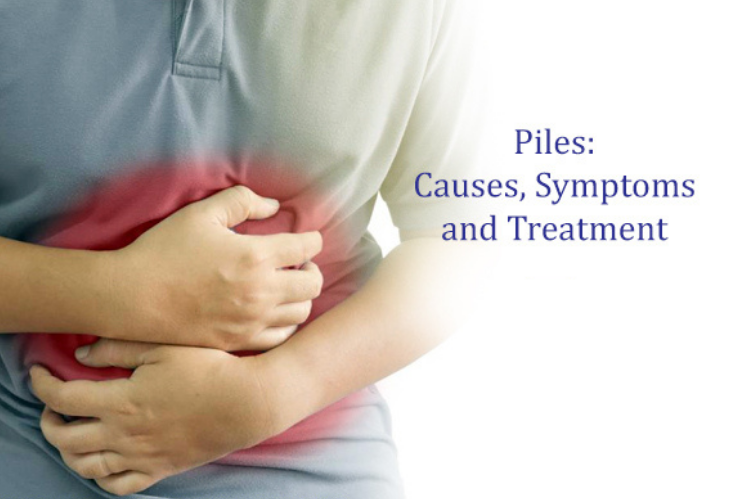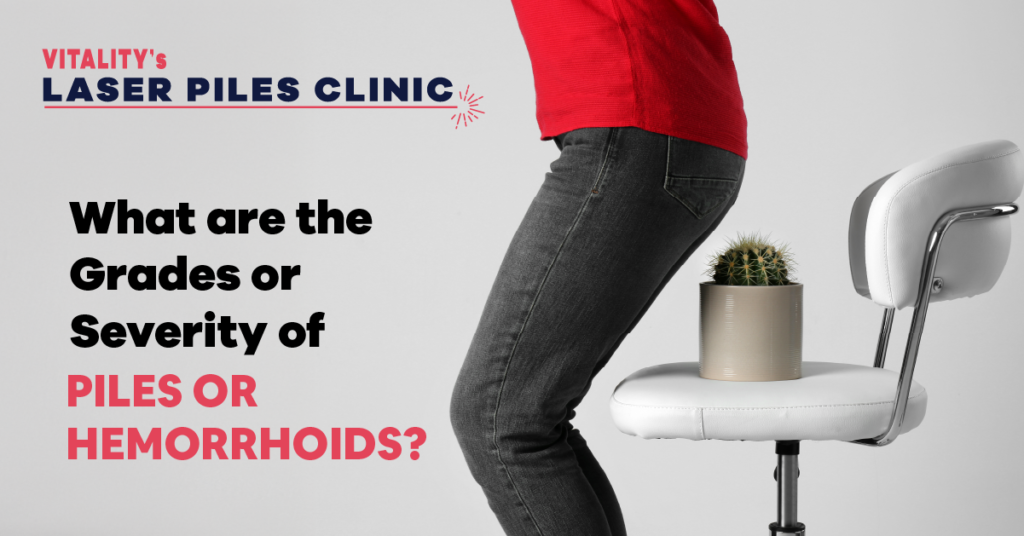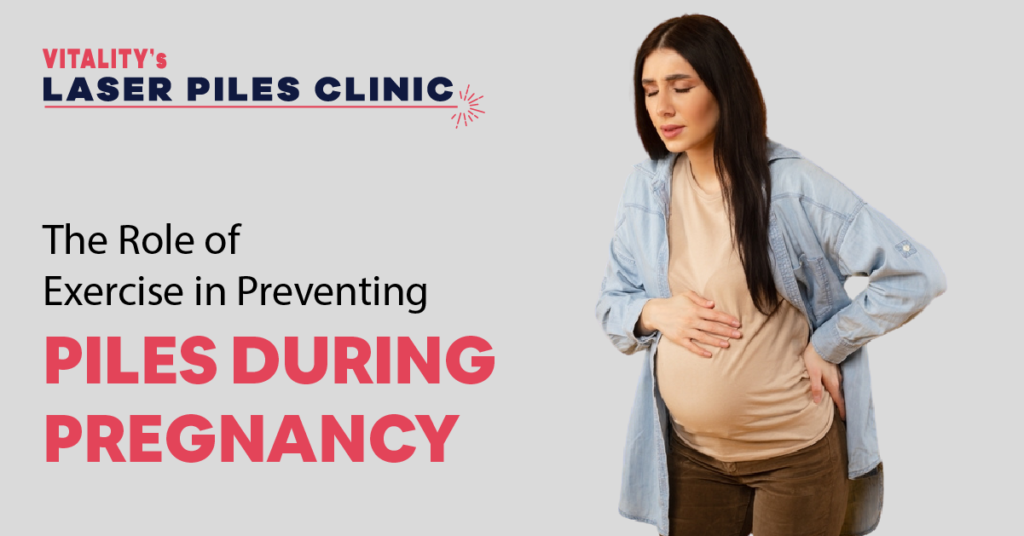The clinical term for piles is Hemorrhoids. These are the inflamed tissues formed in anal canal. They contain muscle, elastic fibers, support tissues and blood vessels. In this condition skin around the anus or the veins in rectum swell or bulge and make the bowel movement intensely painful. According to research done in 2017 by Indian Journal of Surgery, half of people after crossing 50 years of age develop symptoms of piles or hemorrhoids. Piles may lead to serious complications in health and rarely dangerous if ignored.
Pressure on Blood Vessels
The piles or hemorrhoids are caused due to excessive pressure around the internal parts of anus. It causes the patient long term constipation. Due to stress in stool movement caused, it increases the pressure in blood vessels which eventually causes bulge or swelling or inflammation.
Causes of Piles
The causes of Piles or Hemorrhoids are
- Long term constipation.
- Suffering from Diarrhea over a long duration may lead to piles.
- Family history or the hereditary risk with weak blood vessels may cause piles.
- Leading a sedentary lifestyle
- Chain smoking & over consumption of alcohol
- Having a bad diet over long period of time
- Being obese sometimes leads to piles
- Lot of regular stress may lead to causing piles.
- Regular heavy lifting of objects or heavy weight exercises adds risk of causing piles.
- Occupations that require long durations of sitting increases pressure in anal vessels which may lead to piles.
- Pregnancy may cause piles due to adding weight in the pelvis. The pelvis blood vessels take lot of pressure or stress which leads to increase in size of rectal or anal blood vessels but piles may disappear after child birth.
- Infections around the anal canal with constipation cause strain which adds risk of piles.
- Chronic coughing continuously for longer periods may increase stress on abdominal veins which may lead to piles.
- Liver cirrhosis may sometimes lead to enlarged or swollen veins within rectum called varicose veins. Even without constipation these may lead to bleeding and cause other complications. Ascites or more than the required amount of fluids within the abdomen may lead to piles.
- Anal intercourse for too much time may cause piles due to weakening of rectal or anal muscles.
- Any history of surgery of piles may repeat the problem of causing piles due to strain.
Types of Piles/ Hemorrhoids
Piles are classified into four types external, prolapsed, internal and thrombosed.
1.External Hemorrhoids:
Some piles cause in the outer lining of the anal that cause inconvenience and discomfort as well as pain. These sometimes cause small lumps and sometimes they are completely invisible. Sometimes these form blood clots in the weight that comes down.
2.Internal Hemorrhoids
Naked eyes cannot see these as they lie deep inside rectum. These have symptoms of bleeding in through the anus but may not cause pain.
3.Prolapsed Hemorrhoids
These are internal hemorrhoids that swell and come outside of anus with a coined situation. These lumps or bulges have symptoms of burning, itchiness, discomfort and pain.
4.Thrombosed Hemorrhoids
These have blood clots as bulges around anus within the hemorrhoid tissue. These cause lack of blood supply to thrombosed hemorrhoids and rectal tissue and hence there is an urgent need of medical care to avoid severe complications.
Piles come in first degree, second degree, third degree and fourth degree.
- First Degree: Bleeding may cause but major problems may not arise.
- Second Degree: In the beginning they may cause problems in bowel movement but later the problem may deepen.
- Third Degree: They go inside only if you push inside.
- Fourth Degree: They are partially out and swell or bulge due to blood clot and do not let it push in.
Symptoms of Piles
Piles symptoms include
- Rectal pain
- Bleeding
- Mucus discharge
- Sore and redness in the anus area
- Itching
- Bleeding
If the bleeding symptom is not cured within one-week time, it is suggested to consult a specialist immediately.
Diagnosing Piles
Physicians may examine it based on symptoms and insert a gloved finger or proctoscope to check lumps inside rectum. In some cases an anemia test can be done through a blood test.
Home Treatment of Piles
Piles treatment depends on various factors such as severity and type of the hemorrhoids. But self-treatments include:
- Drinking 2 liters of water on daily basis
- Intake of at least 20-30 grams of fibrous foods a day
- Instead of waiting for a convenient time, rush to the toilet Waiting or delaying adds more pressure on the rectum veins which can gradually increase constipation problems leading to aggravating piles.
- Don’t put too much pressure and exert the bowel movement as it will worsen the situation. If not done in 2 minutes, you can try again later.
- To avoid constipation and reduce vein pressure, be active every day morning by doing some exercises.
- Consult a doctor for treatment.
Clinical Piles Treatments
MIPH (Minimal Invasive Procedure for Hemorrhoids)
In the history of piles treatment there was only surgery but now a day MIPH (Minimal Invasive Procedure for Hemorrhoids) is being used. With stapling device, they staple in the anal canal as pain sensing nerve fibers are not high there. With the use of a stapler gun in the cavity they staple so that the piles are compressed in the cuplike cavity of the stapler. This stapler is made of titanium which cut and seal simultaneously causing minimal bleeding. Even the post-operative pain is less. Even there is no incision on the lower part of anal canal or the perianal skin. The wound is closed with the stapler and so is the post-operative dressing. Even the recovery is less painful.
Laser Treatment
There is also laser piles treatment which do not cause much pain of surgical tools. Cutting is not involved and hence there is no blood loss. And this treatment is also permanent and the patient can return to their home the same day. The recovery time of laser treatment of piles is as low as two day. various types of Laser Treatments are:
- Hemorrhoidal Laser Procedure (HeLP)
- Laser Hemorrhoidoplasty (LHP)
- Laser Hemorrhoidectomy
Many people feel embarrassed to even talk about piles and they hardly prefer visiting a clinic. However, it’s important to understand the importance of piles treatment. Visit Laser Piles Clinic and let us help you understand the treatment in detail.
Schedule an appointment today. Call us: 910 850 3674, Email: support@laserpiles.com



